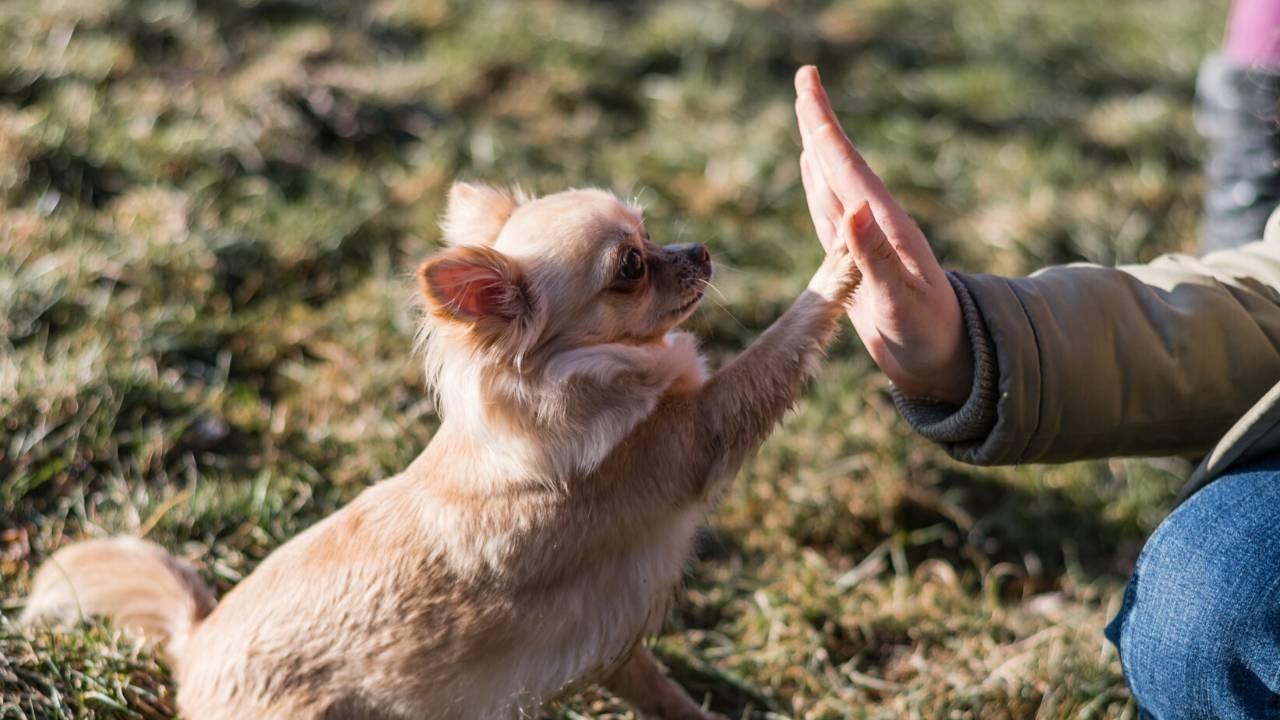Using Hand Signals to Communicate with Your Dog

If you’ve read through my dog training tips, you may have noticed that they focus heavily on verbal commands. But you can also communicate with your dog through body language in ways you don’t even realize.
Using Hand Signals to Communicate with Your Dog
When you accompany your commands with hand signals, you can get even better results. If your dog is hearing impaired or loses hearing in old age, these signals are essential for communication. They can also be used when a normal hearing dog is too far away from you to hear. Let’s say your dog has run across a road and the wind is in the wrong direction for him to hear you. A car is now coming and your dog is starting to return to you from across the road. If you give him the hand signal to lie down, he will down right where he is, keeping him safe and away from the moving car.
Dogs communicate mostly through body language so it is easy for them to pick up learning these signals.
Here are a few gestures to perfect as you’re preparing to train your dog.
Verbal Command Versus Gesture
You can teach hand gestures even if you’ve already begun training. Simply use the gesture before stating the command. Over time, your dog will begin to associate the hand gesture with the desired result, and you can remove the verbal cue altogether if you prefer. The hand signals I use most often are sit, down, stay and come.
Distractions
Dogs are constantly tuned into their environment, which can make training difficult. For best results, find a distraction-free environment to practice commands. Make sure you have your dog’s full attention when you start with the hand gesture. Over time, you can add in distractions and remove treats from the setup to ensure that you can use the hand gesture no matter where you are. The goal is to get your dog to reliably respond to the signal.
Treat-Based Gestures
Treats are an essential part of training a dog, but you only need them when training a new behavior. Let’s say you are teaching your dog the hand signal for sit. Here is the procedure you would use to do this:
- With the dog facing you, do the hand signal. The standard signal for sit is to lift your hand (palm facing up) from your side to be parallel with the floor.
- Hesitate a second.
- Say the verbal command “sit”.
- When the dog sits, click and give a treat from your pocket.
- After 5-10 repetitions, stop giving the verbal command.
- Repeat until the dog reliably follows the hand signal.
- Practice using the hand signal with the verbal command and then practice with just the hand signal.
If your dog understands the command but is not in the correct position, ie, if you signal for sit and he lays down, you may now use a verbal correction of “uh, uh”. In order to correct, put your hand/arm down by your side. Give the verbal correction “uh, uh”. Be sure to have your dog’s attention and give the hand signal again. Give your dog a few seconds to figure it out. Be patient. If he does not figure it out, begin again with the correction. If your dog responds correctly to the hand signal, reach into your pocket and give a treat along with lots of praise.
Learn Standard Hand Signals
Although you can teach the hand signals you prefer, it can help to bone up on common hand signals used for hearing-impaired dogs. If your pet is ever in the care of a sitter, vet, or groomer that uses hand signals, it could help to have things standardized. The Deaf Dog Education Action Fund has a list of common hand signals.
Whether or not your dog needs hand signals, they may come in handy at some point in your dog’s life and are definitely worth training. Check out my basic training tips to ensure you cover all the basics when you’re teaching gesture-based commands.
Come When Called Checklist
This FREE checklist will explain everything you need to know about teaching your dog a reliable recall - one that should work 95% of the time if you are consistent and follow my methods.
FREE EBOOK DOWNLOAD
Learn why your dog is jumping up on people to greet them and how to fix this very common problem. It's easier than you think!
50% Complete
Get our Canine Master updates straight to your inbox.
Just pop in your details below and keep an eye out on your inbox... Remember to check your spam folder, just in case!
